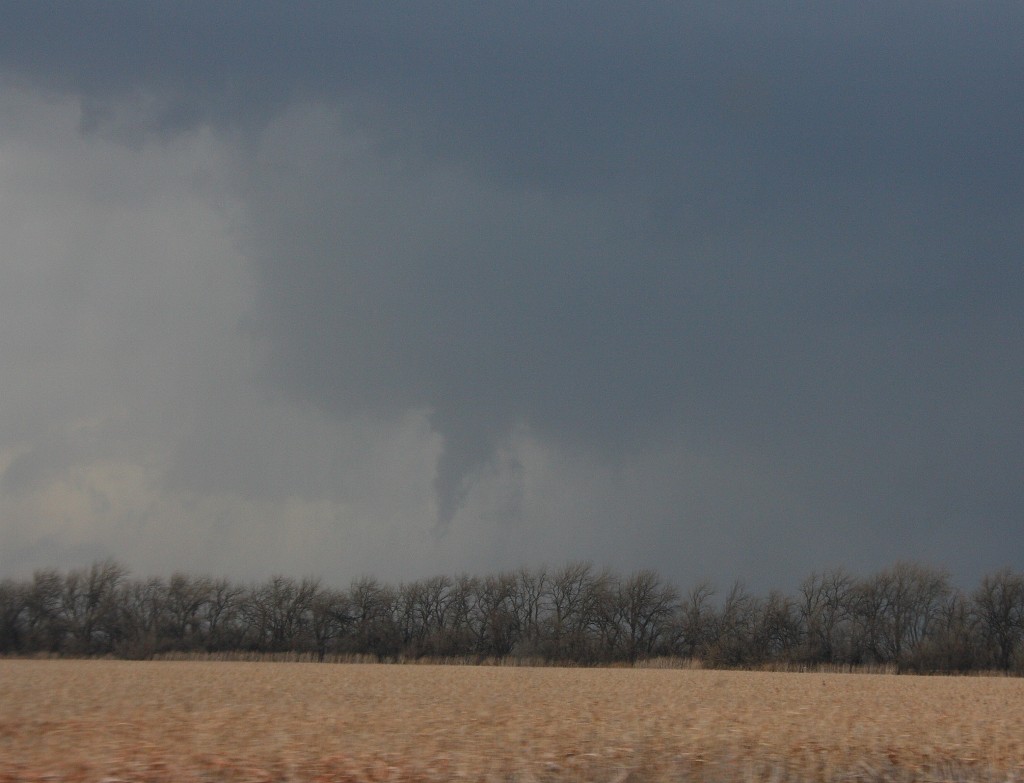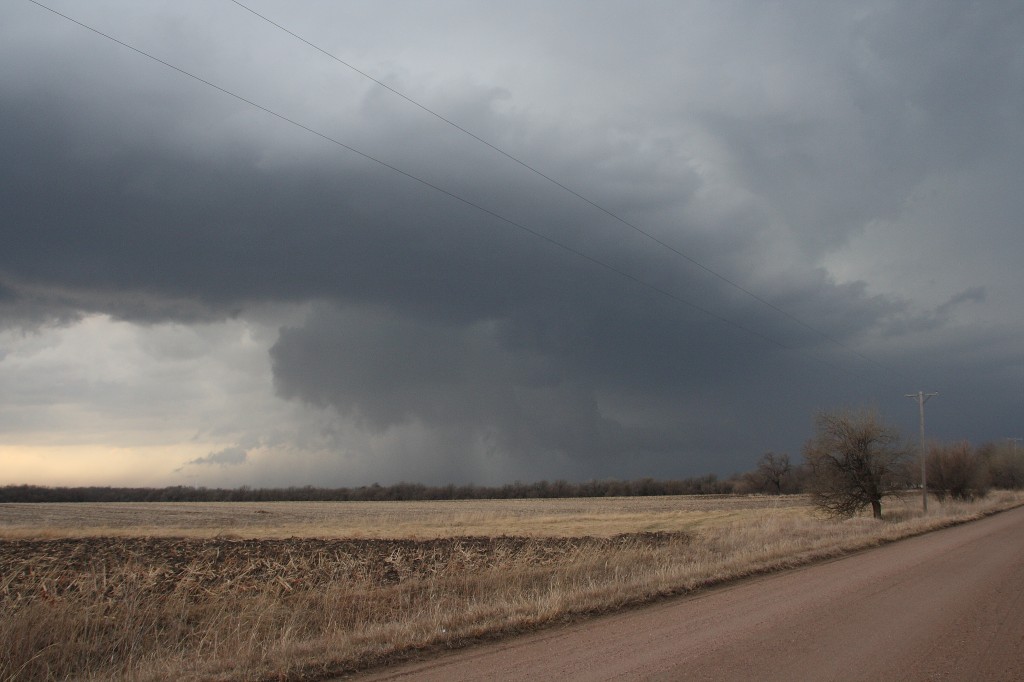Two years after being completely leveled by a 1.7-mile-wide tornado, the town of Greensburg, Kansas, is far down the road to recovery and has become a shining emblem of Green America. Not so with Picher, Oklahoma. One year after its visitation by an EF-4 monster, half of the small mining town is worse than gone, and the other half appears just a shadow’s breath away from becoming a ghost town
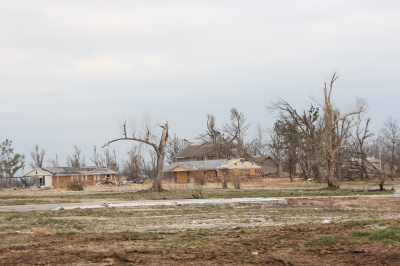
Picher, Oklahoma
The town’s demise is not due strictly to the tornado; the storm simply drove the last, very large nail into the coffin. Driving into the community from any direction, you’ll inevitably see the true culprits: vast piles of tailings tainted with the toxic residues of zinc and lead mining operations. Ironically, the same industry that at one time formed the town’s economic backbone has also spelled its doom. Unlike Greensburg, Kansas, which went green and found its salvation in national attention and an influx of funds, poor little Picher is blighted beyond redemption.
According to the Washington Post, “The mines were shut down in the 1970s, and all that is left in and around Picher are about 1,000 people and giant gray piles of mining waste, known locally as ‘chat,’ some hundreds of feet tall and acres wide, that loom over abandoned storefronts and empty lots.
“The piles are loaded with heavy metals that have contaminated the air and the groundwater and placed the northeastern Oklahoma town in the middle of the Tar Creek Superfund Site, the largest and one of the most polluted in the country. To add to Picher’s misery, a federal study released in January determined that the abandoned mines beneath the city could cause cave-ins without warning.”
That was back in January, 2007, before the tornado. There certainly are no thousand souls left in Picher today. I doubt there are one hundred. It’s a depressing, ugly, desolate place. Yet there are people who remember and love it as home, and a handful who still call it so.
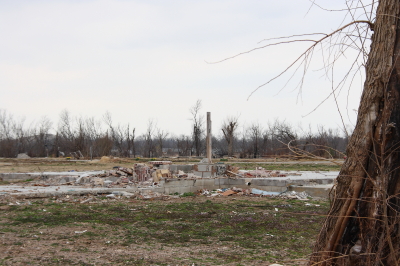
Nothing Left
Last Saturday, my buddy Bill Oosterbaan and I began our chase day with a visit to Picher. The northern part of the town is just a town, though with its empty streets, it reminded me of the set for a spaghetti Western. As for the southern part, it’s blown to smithereens.
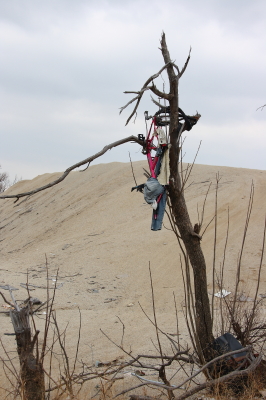
Bike in Tree
Many of the homes have been cleared away, leaving only cement slabs where neighborhoods once stood. Other battered structures remain, their siding stripped away, roofs missing, walls torn out, twisted window frames gazing vacantly at a landscape of tortured trees, tornado trash, lethal chat hills, and toxic lagoons. Debris litters the fields, and sheets of tin and other objects wrap and twist around the treetops. No one is in a hurry to clean any of it up. There’s no need to. No one is coming back.

What's Left of a House
On the north end of the damage track stands an old storm cellar. Presumably, in a tornado that claimed seven lives, the cellar saved a few when the time came for it to serve its purpose. Once a house stood nearby; today, the rough-hewn block shelter stands alone, much like the rest of what is left of Picher, Oklahoma. The cellar resembles a crypt, and in a way, I suppose it is–a memorial marker for a town that is no more.
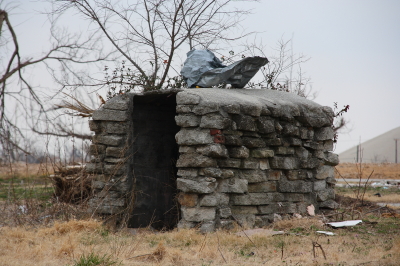
Storm Cellar
